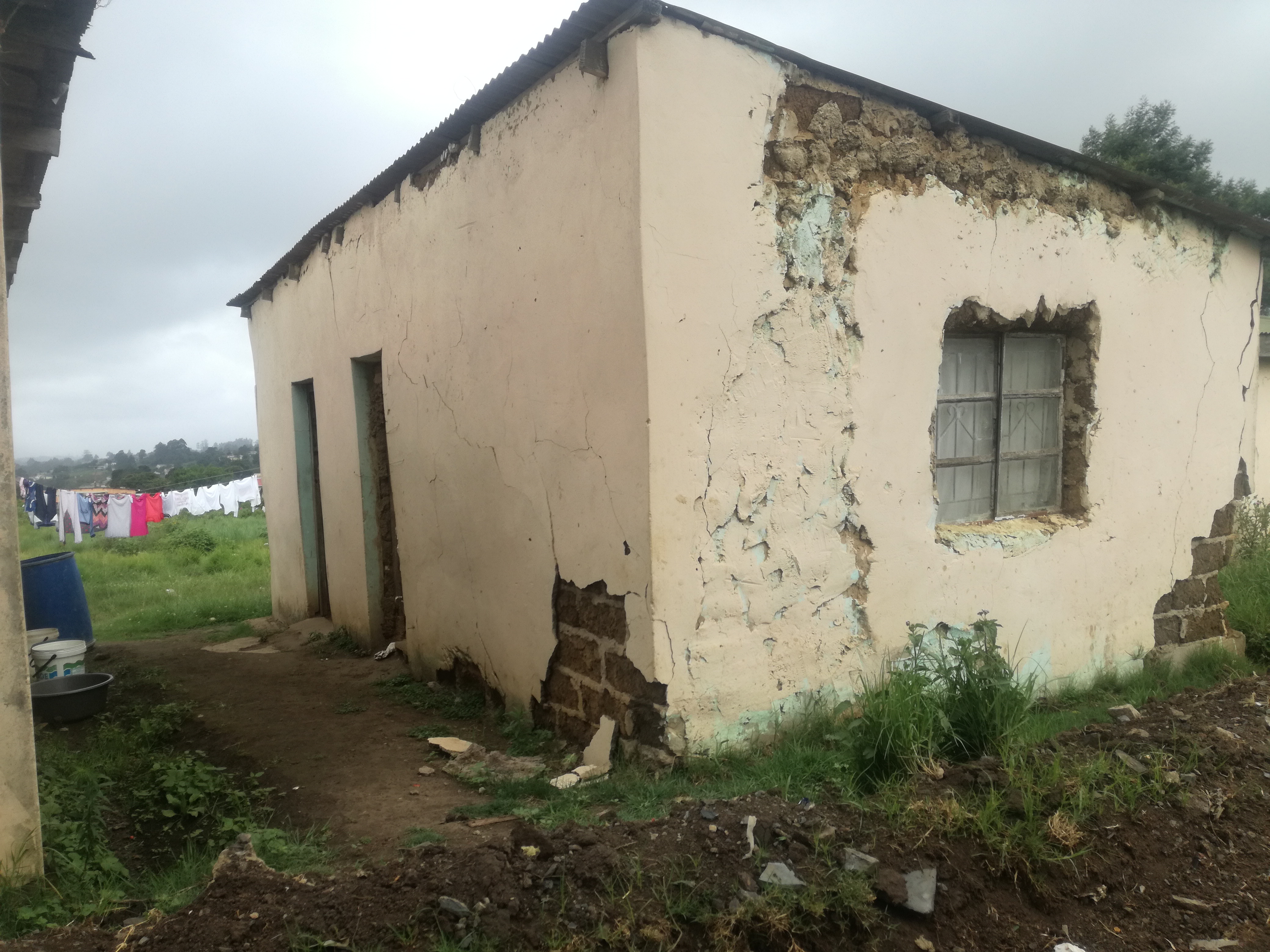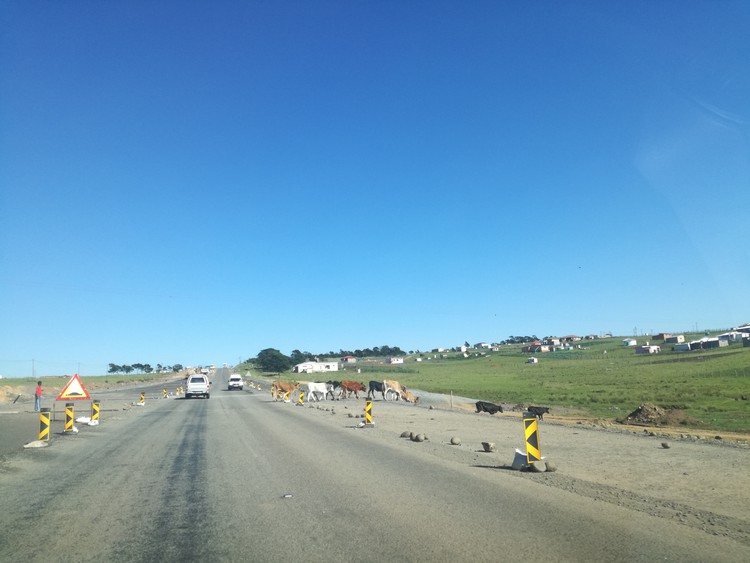Wild Coast toll road: new court battle looms
SANRAL to respond to residents’ objections
The SA National Roads Agency (SANRAL) and the Department of Environmental Affairs have promised to respond by the end of the month to a legal challenge to the controversial R9-billion N2 Wild Coast Toll Road from East London to Durban. The challenge has been brought by Sinegugu Zukulu, a local resident fighting to have the environmental permission for the road set aside.
Zukulu is one of several residents who have complained about a lack of consultation, problems with the removal of graves, and compensation for the relocation of houses. SANRAL has denied any lack of consultation.
The long-running battle over the road has also involved environmental activists worried about damage to natural resources in the area, such as the kingfish in the Mtentu river.
The project extends about 560km between the N2 Gonubie interchange near East London and the N2 Isipingo interchange in KwaZulu-Natal, and will be about 75km shorter than the existing N2 route.
According to SANRAL, the project involves the upgrading and widening of part of the existing road and the construction of new roads, nine new bridges, intersections, toll plazas, pedestrian overpasses and underpasses for animals.
In October 2017, the Pretoria High Court granted Zukulu the right to launch a legal challenge to the authorisation of the highway. Zukulu, represented by Cormac Cullinan and Associates, is a community leader, member of Amadiba Crisis Committee and vice chair of NGO Sustaining the Wild Coast (SWC).
He is the first applicant with five other applicants, namely The Amadiba Tribal Authority, The Khimbili Communal Property Association, Baleni Community, Sigidi community and the Mdatya community.
They are opposed by the Minister of Water and Environmental Affairs, SANRAL, the Minister of Transport and the N2 Wild coast Consortium
Lawyer Cormac Cullinan told GroundUp that it had been a five-year battle, accusing SANRAL and the government departments of “doing anything possible to delay the case”. But in response to questions from GroundUp, SANRAL’s Communications Manager Vusi Mona said the agency had prepared a responding affidavit when the case was first lodged in 2013, but the affidavit now needed updates. “The period requested to finalise the founding affidavit is reasonable given the magnitude and complexity of the case,” said Mona.
Work on the road is continuing in the meanwhile.
He said SANRAL’s legal representatives would deliver the answering affidavits to Zukulu’s attorneys by the end of April.
Albi Modise, spokesperson for the Department of Environmental Affairs, said the Minister would also respond by the end of April.
In his founding affidavit Zukulu asked for the decision to grant the environmental authorisation for the project to be set aside. Although SANRAL has identified the road as a way to boost job creation and development in the surrounding areas, he argues that the primary beneficiaries of the project would be long distance road users and large construction companies.
“The negative impacts will be borne primarily by local people and the environment,” said Zukulu.
The applicants state that the Environmental Impact Assessment (EIA) did not comply with the conditions prescribed by law.
They say the EIA failed to assess the socio-economic impacts of tolling, or to consider heritage impacts or other alternatives such as upgrading the current N2.
Complaints
The road from Flagstaff to Khayanyo village, currently partly gravel, is one of those which will be tarred if the project goes through. When GroundUp visited the area in February, headman Msikaba Cabela said residents had agreed to the road on condition that the community would be involved throughout. But, he said, SANRAL had refused to sit with the whole community and instead had targeted individuals. Residents were being made to sign documents written in English agreeing to things that they did not understand, he said.
Msikaba said that SANRAL had identified which houses would have to be moved but had not put anything in writing.
“Today they will tell you that one house will be affected, then two, with nothing written down, just word of mouth.” Only two of the families who were entitled to compensation because of the relocation had been paid, he said.
Villagers at Mtentu river, which includes Khanyayo, are concerned about the relocation of family graves. They want each household to be paid R20,000 per grave relocated, and for all households to be involved in the relocation plans. They also want compensation for people who have to move their houses and leave their crops behind. All households should be paid a minimum relocation inconvenience fee of R20,000, they say.
Community leader Phumla Cabela told GroundUp that villagers did not want to leave the graves behind. Cabela said SANRAL did not want to pay compensation unless the graves were moved. “If the graves are not where the road will be they do not want to pay. But who can move and leave behind their graves? That is not in our culture,” said Cabela.

Over 100km away in Mevana, Lusikisiki, residents complain that houses are being damaged by heavy machinery used to make the roads. But, said community leader Thando Dlanga, though some of the houses close to the access road were being damaged by the road works, SANRAL had not offered compensation or relocation.
He said they had been told the road would bring employment and skills. Training had been promised but had not taken place. “All the people that were selected by the community are still sitting at home,” said Dlanga.

Amadiba Crisis Committee Spokesperson Nonhle Mbuthuma said that people were sceptical about the road because those in favour of it were also those in favour of the controversial Xolobeni mining project. The committee represents villagers opposed to the mining.
Mbuthuma said SANRAL had put up red flags indicating the route of the new road without consulting the community. Some of the flags were in people’s vegetable gardens. “We see SANRAL cars come to our villages, putting up red flags, even though we had no agreement with them. This is the same strategy as the mining companies,” said Mbuthuma.
Members of the N2 Wild Coast Uphuhliso Lwamampondo Organisation which was formed by chiefs from different areas in the Wild Coast have written two letters to SANRAL to voice their concerns. In the letters the chiefs complain of bad communication from SANRAL. They say commitments made by SANRAL have not been met.
SANRAL response
Asked about consultation with villagers, Mona said there had been an extensive public participation process going back as far as 2001.
Further consultation had taken place since the end of 2015 about the new parts of the road, with provincial, district and local municipality officials and elected leadership, traditional leadership, business chambers, small businesses, communities and others, he said.
SANRAL had held meetings with communities about access management, the location of pedestrian and agricultural over and underpasses, land acquisition and relocations.
Each project had a liaison committee including elected representatives of communities.
Mona said if any family lost some of their land for the new road but continued living on the rest of the land, they were compensated for the land lost.
“In certain cases, compensation has also not been paid as the legal contracts have not yet been concluded,” said Mona.
Asked about the relocation of graves, Mona said Vhubvo Archaeo-Heritage Consultant had been appointed to manage the process.
He said more than 100 graves had been relocated in the Msikaba North and Mtentu North sites.
But SANRAL did not offer compensation to households who had to move family graves. “However, SANRAL does cover all the costs involved for the exhumation and reburial in a new location to the satisfaction of the family. This includes all costs for permits, the undertaker, new graves, coffins and tombstones as well as animals for slaughter, groceries and family members’ travelling costs for the traditional ceremony,” said Mona.
He said it appeared GroundUp “had been fed a lot of misinformation” so as to put the toll road project in a bad light.
“This is the standard practice of the environmental or anti-mining lobby,” he said.
Questions put by GroundUp to the department of Transport more than a week ago have been acknowledged but not answered.
This article was updated to include a response from the Department of Environmental Affairs.
Support independent journalism
Donate using Payfast

Don't miss out on the latest news
We respect your privacy, and promise we won't spam you.
© 2018 GroundUp. 
This article is licensed under a Creative Commons Attribution-NoDerivatives 4.0 International License.
You may republish this article, so long as you credit the authors and GroundUp, and do not change the text. Please include a link back to the original article.

